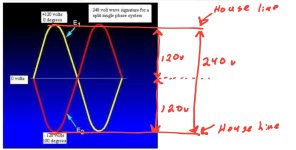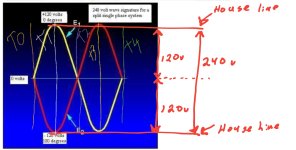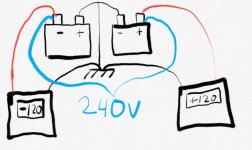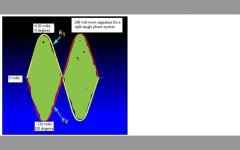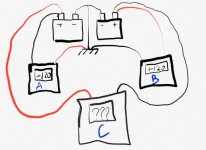TractorGuy
Elite Member
- Joined
- Sep 15, 2013
- Messages
- 4,591
- Location
- N. FL
- Tractor
- John Deere 4310 CUT, Ford New Holland 575E Industrial Backhoe, John Deere F725 Front Mount Mower
Panels are divided in half. Two legs are required. One half has 120v and the other half has 120v. The contacts are staggered so one leg connects to every other contact from top to bottom. 240v breakers use one leg from both sides.
